Cedar Park’s Firefly Aerospace participates in NASA’s next moon mission.
By Jenny Hoff, Photos courtesy of Firefly Aerospace
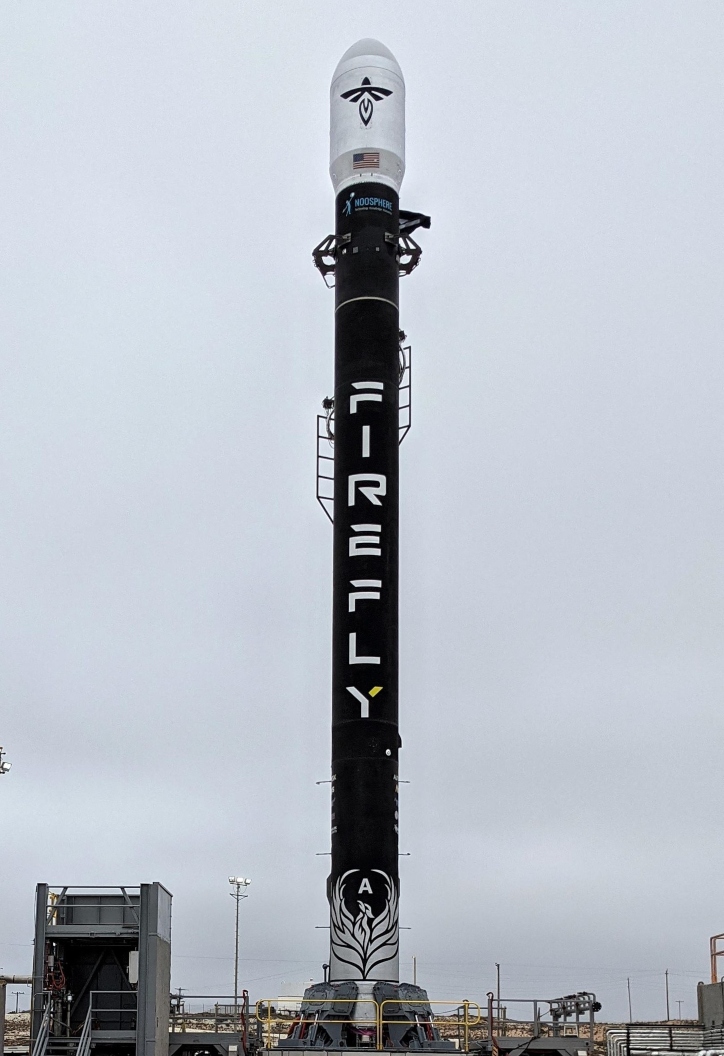
NASA is headed to the moon once again. This time with women at the helm. The Artemis program will send the first female astronaut to the moon using rockets and spaceships women also helped design and build. Women like Sarah Hinze and Brigette Oakes, members of the senior leadership team at Cedar Park-based Firefly Aerospace.
The inside of the Firefly Aerospace building, which sits in a nondescript office strip off a highway in Cedar Park, looks like a sleek startup that could contend with the early days of Tesla or Elon Musk’s more relevant business to Firefly, SpaceX. With glass offices, chrome details, white leather couches and a high-end coffee bar, it feels hip and modern. Rockets flank the entryway and hang from the ceiling; as engineers gather in the glass-walled meeting rooms to discuss the company’s next rocket build. NASA awarded the small company of about 300 engineers, designers and analysts a $93.3 million contract to send science investigations and technology demonstrations to explore the lunar surface as a part of the Artemis mission.
If you don’t blink, you might catch a glimpse of two females buzzing by, off to their next meeting. Sarah Hinze and Brigette Oakes say they don’t mind being only two of three women on Firefly’s 22-member senior leadership team. Having come from companies like Lockheed Martin and SpaceX, they say the ratio of men to women in leadership at the much smaller Firefly is the best they’ve seen. According to industry demographic reports, almost 90% of aerospace engineers are men. That’s a lower percentage than when both Hinze and Oakes started out in the industry. (Twenty years ago for Hinze and 12 for Oakes.)
Introducing Sarah Hinze & Brigette Oakes
“I took a robotics class in high school and I was the only girl there,” recalls Oakes. “I was the only girl who did calculus. My undergraduate class was 93% male. At my first job I was the only woman in my department. At SpaceX, I was the first woman ground support engineer. Three out of 22. That’s good! This is by far the most women I’ve worked with.”
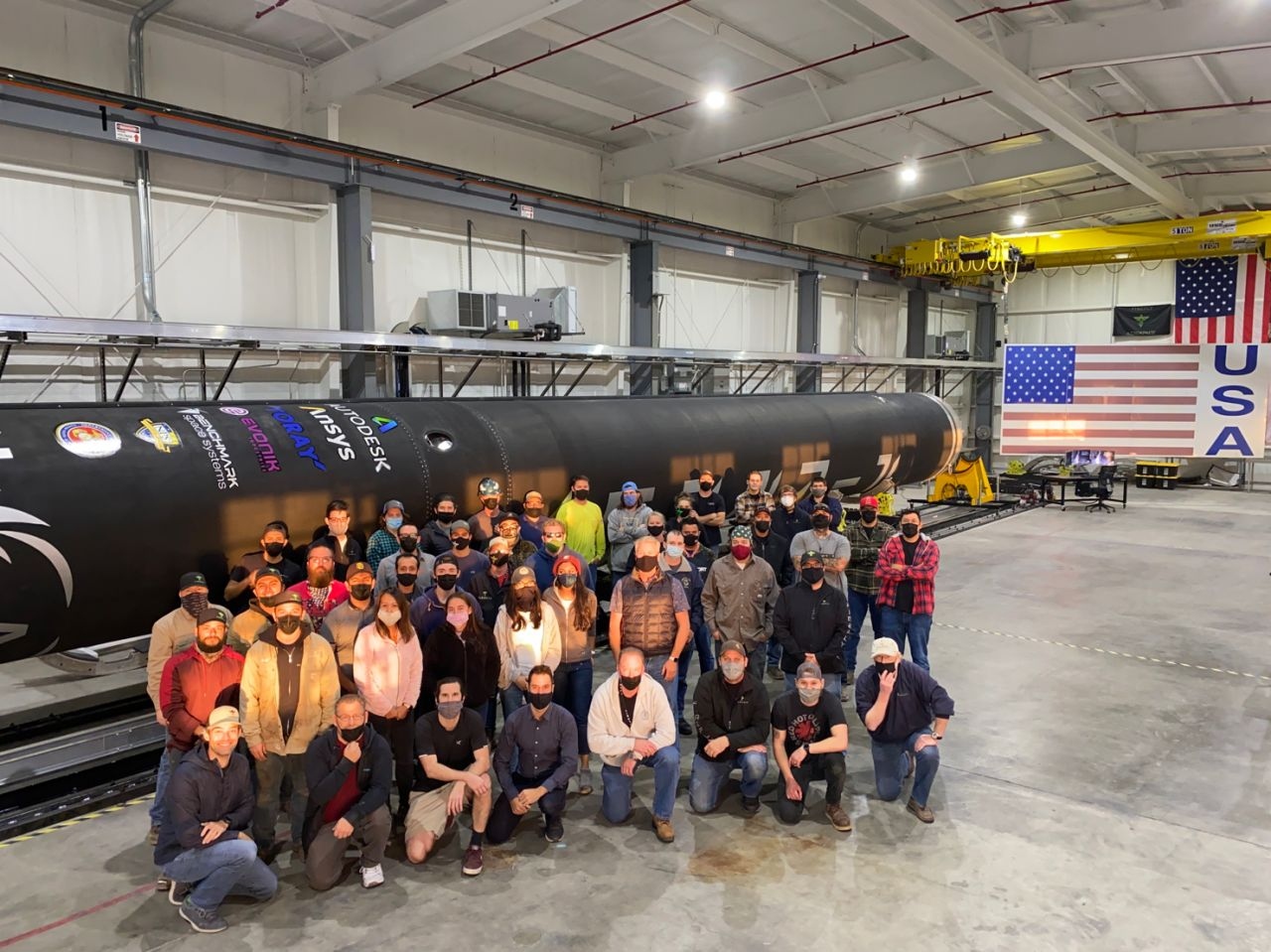
Hinze has had a similar experience. When she graduated from Texas A&M with a degree in aerospace engineering, she was one of only two women in her graduating class. “I went to work at Lockheed Martin on the F-22,” she says. “There were hundreds of engineers working on this project in the basement, and I was one of only three women.”
For the most part, both Hinze and Oakes say they’ve always experienced respect and cooperation from their male colleagues and classmates. At times, their gender even comes in handy. “I can use it to my advantage,” laughs Hinze. “I’m awful at software programming, so I would say, ‘I’m struggling with this,’ and guys would jump to help. They loved helping me. They didn’t want me to lift a finger.”
Workplace Misogyny
Within Firefly, the women have a casual and friendly rapport with their male colleagues. It’s clear they garner respect, and they both carry the confidence of knowing their worth and what they offer. But they don’t take it for granted. For Oakes, there is one dark spot in her career that reminds her how some in power can squash potential and ambition when they feel threatened.
“I had a boss at a former company who would promote interns I had trained over me,” she says. “When I applied for a managerial position in another department, was interviewed and the director wanted to give me the job, my manager blocked the transfer.”
The experience shook her confidence and her belief that hard work and talent was enough to succeed in the industry. She eventually left the company.
“They said, ‘We will give sexual harassment training; we will do leadership training,’” she recounts. “You can sit down and do that, but it wasn’t genuine. The other few women in that department ended up leaving. Within the year of me leaving there were no women left in the group.”
Her former boss is still a director at the company; despite lawsuits, complaints and a lousy track record of keeping talented people on his team.
The Happiest Team at Firefly
Instead of feeling defeated by that experience, Oakes became more determined. When she took on her current role at Firefly, where she leads a team of 30 people, she decided to be the type of manager who would celebrate successes, pay attention to personal issues and demand her direct reports take time off when needed (like paternity leave). She also fights to make sure her design team gets the recognition it deserves.
“Her team would unanimously say it’s the best run and happiest team that we have here,” beams Hinze. She looks proudly at her colleague. “She is very organized, she pays attention to what is going on with her employees. I think part of that is because she is a woman.”
Opposites Attract
The two have their differences, but it’s clear they also have each other’s backs. Hinze is the more outgoing, talkative and self-deprecating of the two. “I’m tall, I’m loud and I like to express my opinions,” she says, with another big smile. She insists Oakes’ talents are much more worthy of a profile than her own. Even though Hinze has the imperative job of managing Firefly’s flagship product, Alpha, an unmanned rocket that brings satellites into space for clients. She ensures each element is on deadline, on budget, functions properly and is ready for blastoff.
Oakes, the whiz-kid from Houston who learned to fly before she learned to drive (she took her first flying lessons at 14 years old), is quieter with a smaller stature than her adoring colleague. And thrives off constantly being underestimated.
“I was ‘Brigette the midget’ in high school,” she recounts, now able to laugh at the memory. “I was technically a dwarf and I was made fun of all the time,” she recalls. “Broke multiple bones because I wanted to try everything. A tiny, dainty tomboy.”
Unlike today, where girls are actively encouraged to join STEM professions, and after-school science activities and clubs aim for maximum girl participation, Hinze and Oakes had to find their own ways to scratch their engineering itch as kids.
A Brush With History
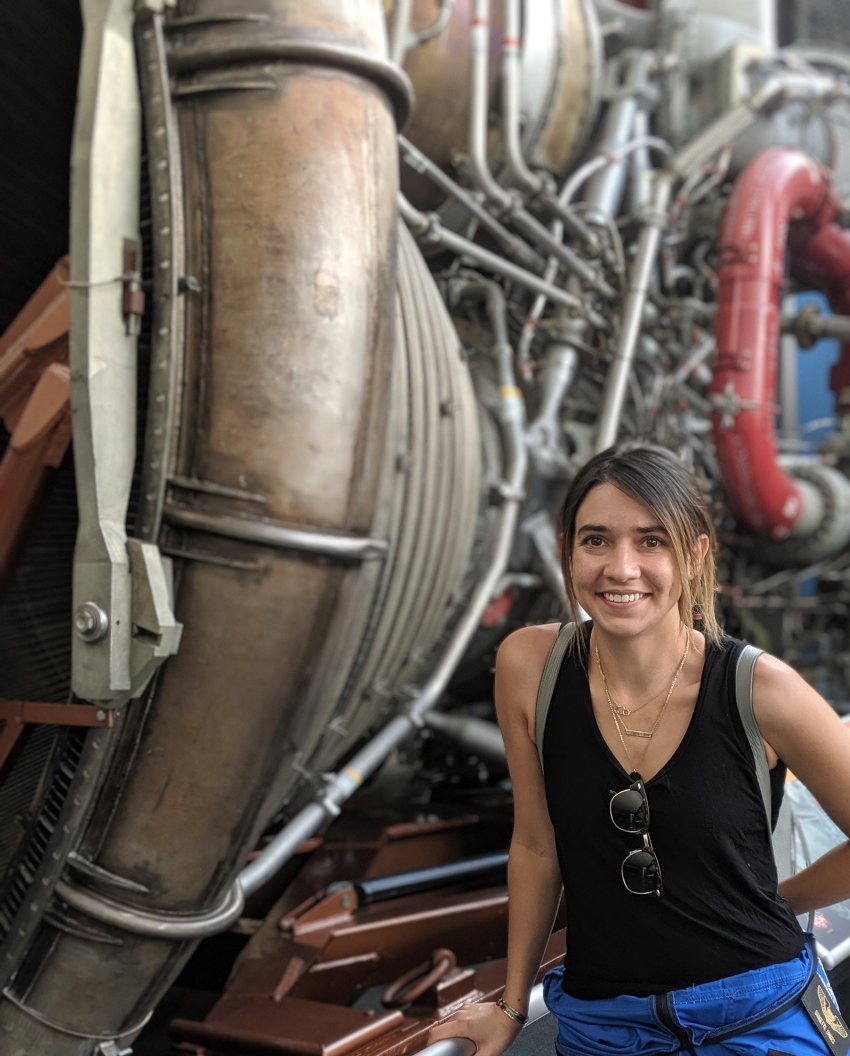
Oakes says growing up in Houston, down the highway from the NASA space station, played a huge role in her interest in space and engineering.
“I was thankful to live next to Lehigh University in middle and high school; they sponsored monthly talks,” she says. “It gave me the opportunity to meet a lot of leaders in engineering and science. The most memorable was Sally Ride. She was the embodiment of someone whose footsteps I wanted to follow in terms of career.”
Space was also a fascination of her father’s. Both Buzz Aldrin and Neil Armstrong, the famous astronauts of the historic Apollo 11 mission to the moon in 1969, were on his paperboy route as a kid. Instead of turning in the checks they left him for their newspaper delivery, he would pay for their papers out of his own earnings and save the checks as a souvenir. Oakes grew up surrounded by books on space, models of rockets and signed checks of two of the most famous astronauts in the world. She quickly developed a fascination with flight, engineering and creating new possibilities. While her father encouraged their shared passion, he made sure she understood the kind of commitment involved.
A Bet to Remember
Oakes recalls a time when she desperately wanted a build-your-own remote-control airplane. Her father cut her a deal. Pass all the quizzes in an engineering book he bought her; then she would get the parts to build the plane.
“He ripped out the answer keys. And each week when I passed the quiz at the end of the chapter, I would get a part of the remote-control airplane,” she says. “At the end of the summer, I finally had every part to build it.”
Oakes says the way he made education both fun and challenging helped it become something she relished rather than dreaded.
An Engineer…”But not in something lame.”
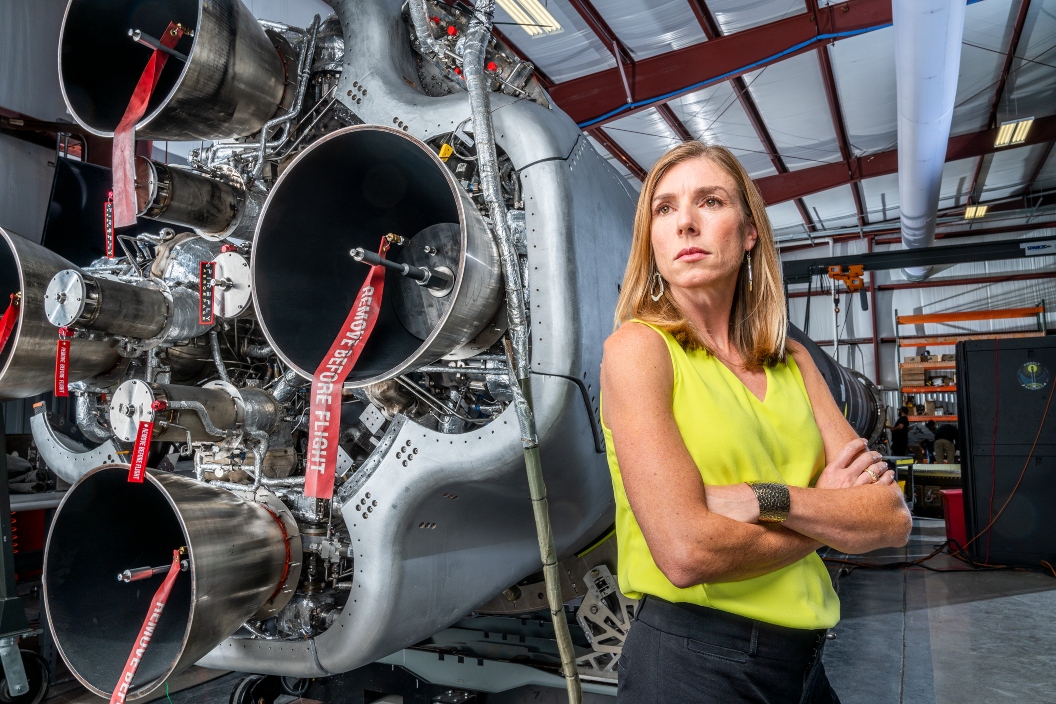
Growing up in Pittsburgh, Texas, Hinze didn’t have quite the same exposure to the world of space as her colleague. While she was a student, her high school introduced its first ever calculus course, which she took. She was also part of a student engineering design team where she was able to work with other future builders and stage experiments. Having a father as an engineer, however, gave her real exposure to see what the career entailed.
He was an engineer in plastics, and she recalls watching him tediously work on straws; she decided then and there that “I wanted to be an engineer. But not in something lame.”
When Texas A&M asked which engineering track she wanted to do, aerospace seemed to have the most potential for exciting projects. As a mom of two boys, she’s proud that they are as fascinated with her chosen field as she is.
“My son had to do a fifth grade science project, and he chose space trash,” she says with a smile. “Because I work here, he was able to speak with an expert in the topic who talks to groups across the country. He came in and got to conduct a real interview.”
Hinze the Stickler
Like many women, Hinze’s career has been circuitous. It began with her rising through the ranks at a major engineering company. And then taking time off when she got pregnant to be a stay-at-home parent. After spending eight years as the head of her household, she was ready to re-enter the workforce and was thrilled to be a part of an aerospace startup, where she could help create a rocket from inception to launch, managing the process every step of the way. Alpha, Firefly’s signature product and Hinze’s responsibility, is planned to launch in September from their base in California. The goal will be to launch twice a month, carrying small satellites into space.
“Everybody in the company hates me,” she laughs. “I’m the stickler.”
One would think that working on highly complex space projects at a startup, in addition to being parents—Hinze has two sons, and Oakes has one son and another baby on the way—these two aerospace engineers would have little time for anything else. Quite the contrary. Hinze is a long-distance runner, in peak form. Oakes builds airplanes (and not the models she built as a kid). One of the reasons Oakes wanted to move to Austin from California was to buy a home with a big enough garage to work on her latest project, building an actual airplane that she will eventually fly. She’s also working on a Ph.D. in engineering physics. (She already has two master’s degrees, one in physics and one in aerospace from Stanford.)
Both women insist their success in both work and family has a lot to do with time management and setting up systems that create better flow. About a year ago, Oakes took three months to train her team on a task-management system to better manage workflow. “Otherwise I wouldn’t have time to pursue anything else,” she says.
Creativity, Grit & Confidence
Clearly Oakes and Hinze are two highly motivated, highly intelligent individuals with impressive scholastic achievements and a will to accomplish difficult and arduous tasks. But they say to succeed in an industry such as aerospace engineering, it’s not all about school recognition and Ivy League status. As with most jobs, it’s about creativity, grit and a mix of confidence in one’s abilities with just enough humility to never get too comfortable (which can lead to stagnation).
“It’s not the Ivy League kids who do great at the interviews,” says Oakes. “It’s the ones who grew up on a farm and figured out how to fix their vehicles. The person who built their own unicycle at home with carbon fiber.”
It’s also the kind of person who manages to take on mothering a newborn while simultaneously designing parts of a rocket on a tight deadline. Giving birth right before COVID-19, Oakes says she was grateful to have to work from home, since it allowed her to comfortably breastfeed her son, while also fully participating in work. She now wants to work toward affording that kind of convenience to other women in her company and hopes it sets a standard for the industry at large. She believes women shouldn’t have to choose between breastfeeding their baby and staying in their careers. Changes like these might make the industry more female-friendly, at a time when women are starting to play a bigger and more forward-facing role in the future of space flight.
To the Moon…and Beyond!
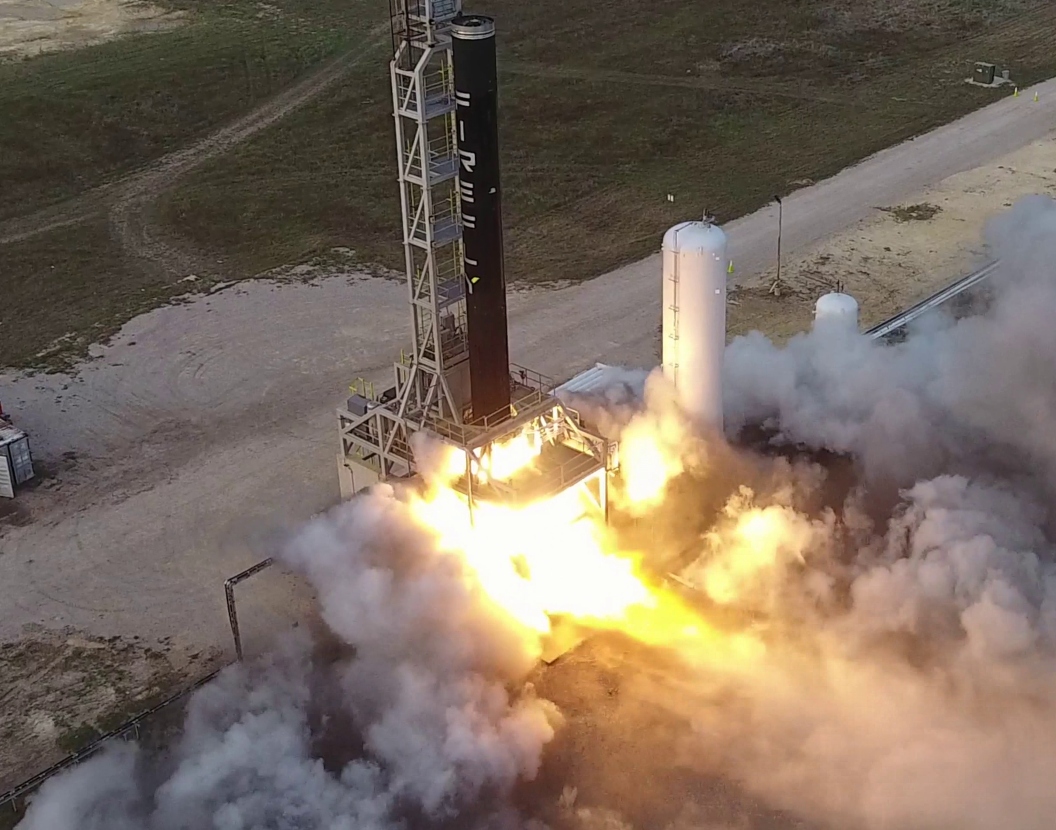
In Greek mythology, Artemis is the twin sister of Apollo. As a goddess, she rules the hunt, the wilderness, wild animals…and the moon. As a space mission, Artemis will carry the first woman and person of color to the moon’s surface, half a century after Apollo sent the men Oakes spent her childhood admiring.
Perhaps it will be this new generation of astronauts, men and women, whom Oakes’ and Hinze’s children will look up to. Coveting their signatures and reading their stories as they dream of exploring the world beyond their own.


